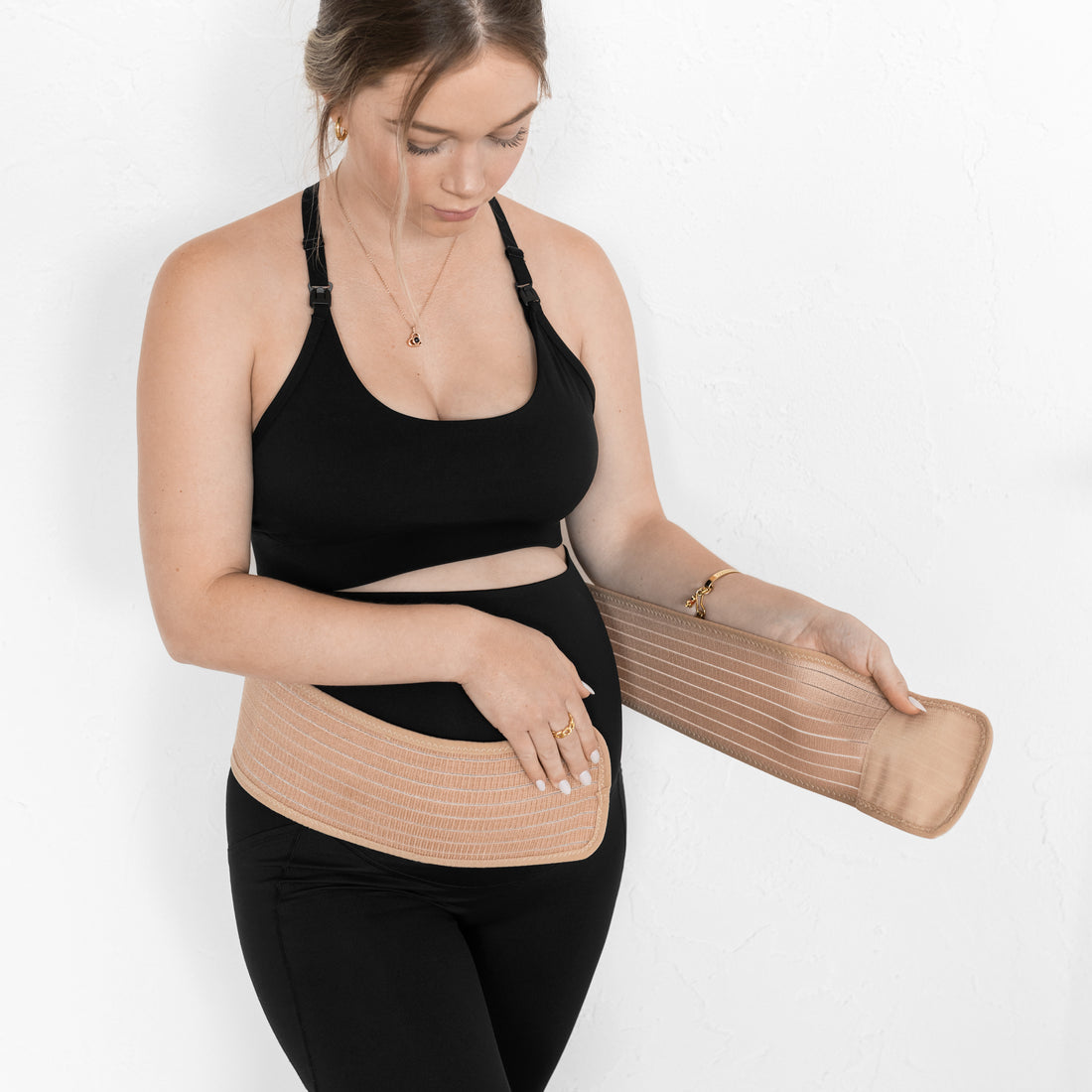Pregnancy isn't always easy, and many women experience a wide range of unpleasant symptoms. The maternity belt, which is worn like a belt, is a product that has helped reduce some of those problems. Moreover, it can facilitate regular activities and make life less demanding. Pregnant women can look forward to more ease and comfort thanks to the maternity belt and its many useful features.
What is a maternity belt?
A maternity belt is a wide, fabric band that wraps around the abdomen to provide support and relieve discomfort for pregnant women. They are available in many different styles, colors and fabrics, such as elastic, velcro, wool, cotton and neoprene.
The pregnancy belt may be adjusted and personalized to fit your needs, and it can be worn either under or over clothing. It's safe to wear for the duration of your pregnancy and especially helpful in the final stretch, when your developing baby and uterus put more stress on your lower back.
There's no set rule for when to start using a maternity belt, but most doctors advise starting when the abdominal muscles start to feel exhausted and/or the lower back starts to ache. When pregnant, it's important to wear a maternity belt if you'll be doing any heavy lifting or carrying, standing or walking, or sitting in one position for an extended period of time. It can also come in handy when you need to use your ab muscles to pull or push anything, like when going up flights of stairs, pulling a large shopping cart, or lifting a bulky suitcase.
Benefits of the maternity belt
The benefits associated with maternity belts are plentiful, and include the following:
- Improved posture. A maternity belt relieves strain on the abdomen and lower back, allowing you to maintain a proper posture while sitting or standing. It also aids in fetal placement during birth by encouraging the baby to descend into the pelvis.
- Improved circulation. A maternity belt helps alleviate edema and increase blood flow to the legs by supporting the abdominal area. Some pregnant women get leg cramps, and this can reduce those as well.
- Support during strenuous activities. Lifting heavy objects, climbing stairs, walking long distances, and other demanding tasks can all be done with less stress on the pregnant woman's belly and lower back if she wears a maternity belt.
- Easing of lower back pain. For many pregnant women, a maternity belt provides relief from lower back pain.
- Comfort while sleeping. A maternity belt can make sleeping more comfortable by lifting the abdomen, allowing the lower back to rest more fully on a supportive mattress.
- Increased energy. A maternity belt can also help to increase energy by reducing the amount of physical effort needed for everyday tasks, such as lifting, pushing and pulling.
How to use a maternity belt
Before you start wearing a maternity belt, it’s important to make sure you use it properly. Start out wearing it for one or two hours, and then increase the time as needed. Most importantly, make sure it’s not too tight, as that can cause more harm than good. Here are some tips on how to use the maternity belt:
- If you’re wearing a maternity belt over the abdominal area, first put on a shirt, followed by the maternity belt.
- If you’re wearing it under your shirt, put on the maternity belt first, and then put on the shirt.
- If you’re wearing a maternity belt over your abdominal area, make sure it doesn’t ride up too high and cover your ribs. If it does, you could end up compressing your stomach and digestive organs, so adjust it until it feels comfortable.
- If you’re wearing a maternity belt under your abdominal area, make sure it’s far enough down that it doesn’t ride up and compress the stomach and digestive organs.
- You can wear a maternity belt under your clothing, which makes it discreet and easy to wear.
- You do not need to wear your maternity belt constantly. Instead, wear it when you need the extra support and comfort.
A maternity belt can help relieve back pain and make it easier to do everyday tasks, but it is not a replacement for medical care. If you’re experiencing discomfort, speak to your doctor to get help finding the right treatment for you.
Safety considerations when using a maternity belt
Keep in mind that more support does not necessarily mean better support when using a pregnancy belt. In addition to avoiding wearing the maternity belt all day long, you should make sure you don't wear it too tightly.
Make sure the belt is not overly tight, especially if you plan on wearing it for an extended amount of time; doing so might lead to chest pain, dizziness, and even fainting. It's also important that the maternity belt be made of a breathable material, since this will decrease the likelihood of skin irritation or rashes.
Alternatives to the maternity belt
Unsure about wearing a maternity belt? There are other products that can be used as an alternative to a maternity belt, including a posture corrector or a wide support bandage. You can also try the following to relieve pressure on your abdomen and lower back:
- Sit with good posture. When you’re sitting, make sure your back is always supported by a chair with a good, ergonomic design, and that your knees are bent and your feet are planted on the floor.
- Stay active. Exercising during pregnancy has many benefits, including helping to relieve back pain and promoting good circulation. Walking is one of the best exercises you can do to relieve back pain.
Pain in the lower back and abdomen is a common pregnancy symptom. Wearing a maternity belt, however, can help ease the pain and discomfort associated with these areas in the final stretch of your pregnancy.



